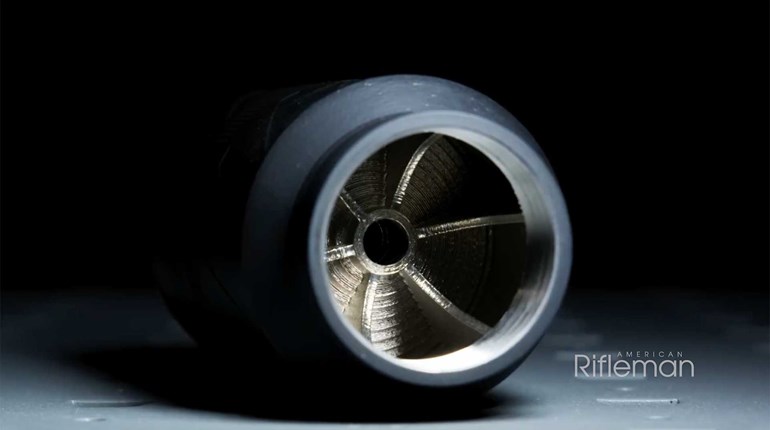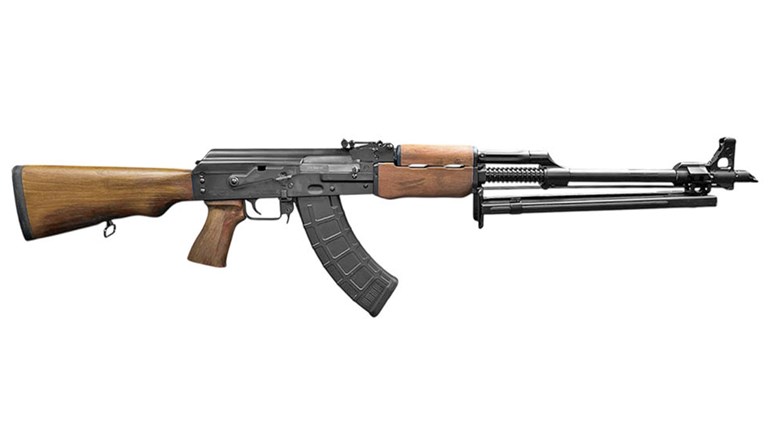
A few years ago I decided to build an AR chambered in 7.62x39 mm just to see how ammo not known for much more than reliability could shoot in a decent rifle. The successful result of that test is now my main hunting rifle and has led to many more rifles and upper-receiver assemblies in this plentiful and very capable caliber. Last summer I noticed that the other AK chambering, 5.45x39 mm, likewise stood out as being very inexpensive and available in large quantities in comparison to any other centerfire offering. When stockpiles of the 5.45x39 mm AK-74 ammo first hit our shores, you could pick up a case of it for just over 10 cents per round.
However, a fall 2016 Federal court ruling on the 7N6 projectile designed for the 5.45x39 mm upheld the Obama administration’s decision to classify it as armor-piercing and therefore forbidden to import or sell. So, for the time being that vintage spam can stuff is no longer an option. As near as I can tell it was all corrosive, which did not hold much appeal to me personally. But it would be nice if the new administration would reverse this ridiculous position and again allow an inexpensive surplus round into the U.S. for consumer use.
Fortunately, a handful of companies still offer non-corrosive loads with conventional projectiles to shooters on this side of the Atlantic. Most of these use full metal jacket (FMJ) projectiles, but Hornady Manufacturing offers a 60-grain V-Max load, too. All of the ammunition I found was steel-cased so as of this writing, handloading for this cartridge is a no-go unless you manufacture your own brass. Factory ammo is currently running around 23 cents per round for the cheapest FMJ and 33 cents per round for the cheapest V-Max I could find. That’s about 10 cents cheaper than 5.56 NATO target fodder and half the cost of the least-expensive .223 Rem. V-Max load.
I wanted a barrel for this AR upper that would be slightly above “AK-grade” but could not find anyone claiming “match” quality. So, I settled for a 16-inch, HBAR, fluted stainless steel barrel with a 1:8-inch twist from Red-X Arms that looked promising. The only other non-5.56 NATO components I chose were a bolt assembly from ARD and two 30-round magazines from C-Products. Most folks go with a dedicated firing pin, but I decided to try a 5.56 NATO variant first.
I had high hopes for the accuracy of the 5.45x39 mm round going into this effort due to the solid performance I see with V-Max bullets in just about any cartridge. First up on my test roster though was Tula’s 60-grain FMJ and it also presented my first problem. I loaded a round but it didn’t go completely into battery. Rather than hammer it in with the forward-assist assembly, I wanted to see if the problem was due to a fussy extractor or a dimensional conflict between cartridge and chamber. It turned out to be the latter, showing up in the form of a projectile stuck in the bore when I retracted the bolt. Once I got all the loose powder out of my rifle and drove the bullet out with a rod, I compared the profiles of the Tula, Wolf and Hornady 5.45x39 mm projectiles. Although cartridge overall lengths were the same, the Tula bullet’s bearing surface—the full caliber portion of the projectile—was farther forward than those of the Wolf FMJ or Hornady V-Max bullets, causing the Tula to engage in rifling before the cartridge was fully chambered. I set that ammo aside and had better luck with the Wolf. However my 5.56 NATO firing pin gamble did not pay off. After a few light strikes, I switched to a 7.62x39 mm AR firing pin from Model 1 Sales and had no further issues.
Hornady’s 60-grain V-Max load was the clear winner in the accuracy category, printing sub-1-inch groups at 100 yards from the bench, using a 12x scope. Absent were the tiny five-shot knotholes I often get with Hornady’s 55-grain V-Max in .223 Rem. Instead, the best five-shot group of the eight fired using the Hornady load came in at .79 MOA while the rest printed between .8 and .96 MOA. Wolf’s FMJ load grouped between 1.1 and 1.6 MOA. So, for now I would place the 5.45x39 mm cartridge in the “reasonably accurate” category. I put a total of 95 rounds through the upper during its initial break-in session.
Function from dedicated 5.45x39 mm mags was flawless. While 5.56 NATO mags will work in a pinch, they can only handle having a few rounds loaded before things go awry. As for availability, various gunmakers have offered ARs chambered in 5.45x39 mm, and a couple bolt-actions have popped up over the years, but outside the AK realm, rifles appear to be mostly limited to DIY builds or custom rifles.
So where does the little 5.45x39 mm Russian cartridge fit into the big U.S. shooting picture? Terminal ballistic testing suggests that the very long 5.45 mm projectiles tumble early after penetration in tissue so that even FMJ ammo may be suitable for defensive use. That makes keeping a good quantity of multi-purpose ammo on-hand a very affordable prospect. Likewise if you have need of cheap factory varmint loads, the 5.45x39 mm might just be the ticket. I plan to try other available factory loads and at least another barrel or two in this chambering to see if it has greater potential down the road.






































